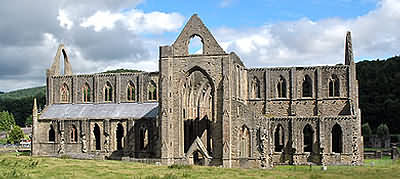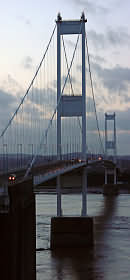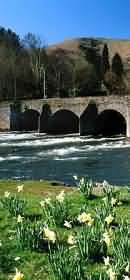
The Local Time is Saturday, 27-Jul-2024 11:54:16 CEST
Tintern Tourist Information and Travel Guide |
|
|||
| YOU ARE HERE: Main Home Page > Monmouthshire > Tintern |
|
|
|
|
 |
|
Tintern the County of Monmouthshire
|
|||||
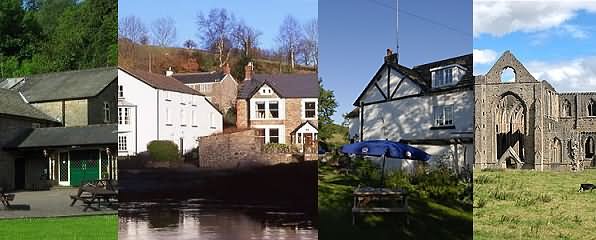 |
|||||
you won't find Tintern If you look at a road map, but you will find Chapel Hill and, just above it, Tintern Parva. These were the names of the two old parishes which are now combined into the modern day Tintern. With a population of some 750 people, the numbers are 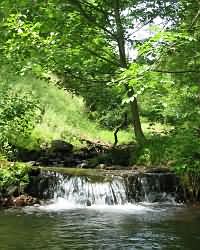 swollen by the thousands of tourists who visit every year. swollen by the thousands of tourists who visit every year.
Tintern has been welcoming visitors for centuries. Situated in the breathtakingly beautiful Wye Valley, designated an Area of Outstanding Natural Beauty (AONB), Tintern is situated on the River Wye, just six miles upstream from Chepstow and the M48. Now approached on the A466, up to 150 years ago, Tintern would have been reached by the River Wye. With a tidal range of twenty feet, Tintern has learnt to live with tidal flooding, yet the inspiring remains of Tintern Abbey are not known to flood. Tintern is home to several different walking trails, in addition to notable areas of interest. A wooden bridge a little to the north of the Abbey crosses the River Wye, and is open to the public on a yearly basis. The bridge leads to a choice of several clearly marked walking paths, most notably a path to For the last 200 years, Tintern has earned a living from tourism, and today this is the main source of income for those who still work in the village. A huge proportion of the village is forested, and until recently, many men in the village worked as foresters or with wood. A quarry was also responsible for providing local employment, as did the farms and small-holdings. For 300 years, Tintern had a wire making industry, (the first place in the U.K. to make wire industrially), employing many people however that finished in the 19th century, but not before making part of the first trans-Atlantic cable. Today most of the working population commute by car to the work place, Bristol, Newport, Cardiff and the South Wales Valleys.
This is border country - officially Wales, but in spirit neither Welsh or English - it's "The Valley"! Some of our visitors arrive on foot, because Tintern is on two long distance paths - the Offa's Dyke, which follows the Welsh border from Chepstow to Prestatyn, and the Wye Valley walk which will take you to Rhayader. It's a walker's paradise - thirty seven miles of footpaths in Tintern for the tourist to enjoy, as they explore the forest or the industrial archeology of the Angiddy Valley. Visitors can refresh themselves at several welcoming pubs and hotels in the village, and are encouraged to stay overnight at the several guest houses and B&Bs. In fact stay several nights because Tintern is an excellent centre, as many attractions are easily reached within an hour, like Bath, the Cotswolds, Hereford, Gloucester and the capital of Wales, Cardiff.
The beauty of Tintern and the Wye Valley has inspired many authors, poets and painters over the years. The most famous painter to have visited the Abbey was Turner, and of course, Wordsworth immortalised Tintern in his work "Prelude". Today, this beautiful area, deeply wooded on the steep sided walls of the valley, are still inspiring the muses, and you often stumble across artists trying to capture the beauty on canvas. The history of Tintern is as rich and varied as its scenery, and there is a deeply spiritual atmosphere. With all this beauty, history and atmosphere, no wonder so many overseas tourists include Tintern in their itinerary. You will be very welcome there.
|
|||||
|
|||||
| BACK TO TOP | |||||
|
|||||
Tintern in the County of Monmouthshire Tour and Tourist Information Guide |
|||||
| This page last modified Tuesday, 28-May-2019 11:02:43 CEST | |||||
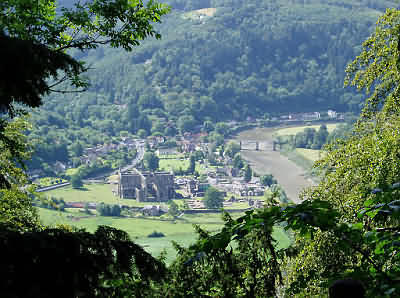 'Devil's Pulpit' and a path to Offa's Dyke. 'Devil's Pulpit' is a small rocky outcrop that overlooks the abbey. According to local legend, the Devil used to preach from the outcrop and attempt to seduce the Abbey's Monks away from Christianity. The ruins of 'St. Mary's Church' can also be seen on a hill to the east of the abbey. The church itself was ruined by fire in 1977, though much of it is still clearly visible today. A disused water-driven mill lies a little to the south of the abbey. Visitor information and shops can be found close by. The village also boasts an award-winning vineyard.
'Devil's Pulpit' and a path to Offa's Dyke. 'Devil's Pulpit' is a small rocky outcrop that overlooks the abbey. According to local legend, the Devil used to preach from the outcrop and attempt to seduce the Abbey's Monks away from Christianity. The ruins of 'St. Mary's Church' can also be seen on a hill to the east of the abbey. The church itself was ruined by fire in 1977, though much of it is still clearly visible today. A disused water-driven mill lies a little to the south of the abbey. Visitor information and shops can be found close by. The village also boasts an award-winning vineyard.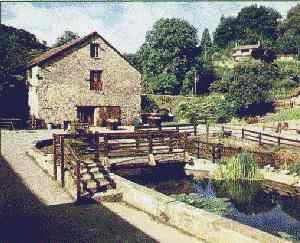 Abbey Mill is also known as the "Wye Valley Centre". It is a complex of shops set around an old mill building. This was the original mill site serving
Abbey Mill is also known as the "Wye Valley Centre". It is a complex of shops set around an old mill building. This was the original mill site serving 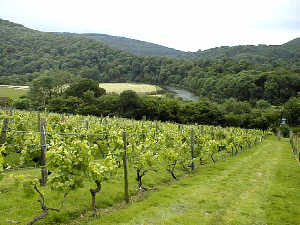 There is a vineyard situated on the hill at the northern end of the village of were Visitors are welcome for vineyard tours set in a working farm environment with sheep, cattle and ponies.
There is a vineyard situated on the hill at the northern end of the village of were Visitors are welcome for vineyard tours set in a working farm environment with sheep, cattle and ponies. 